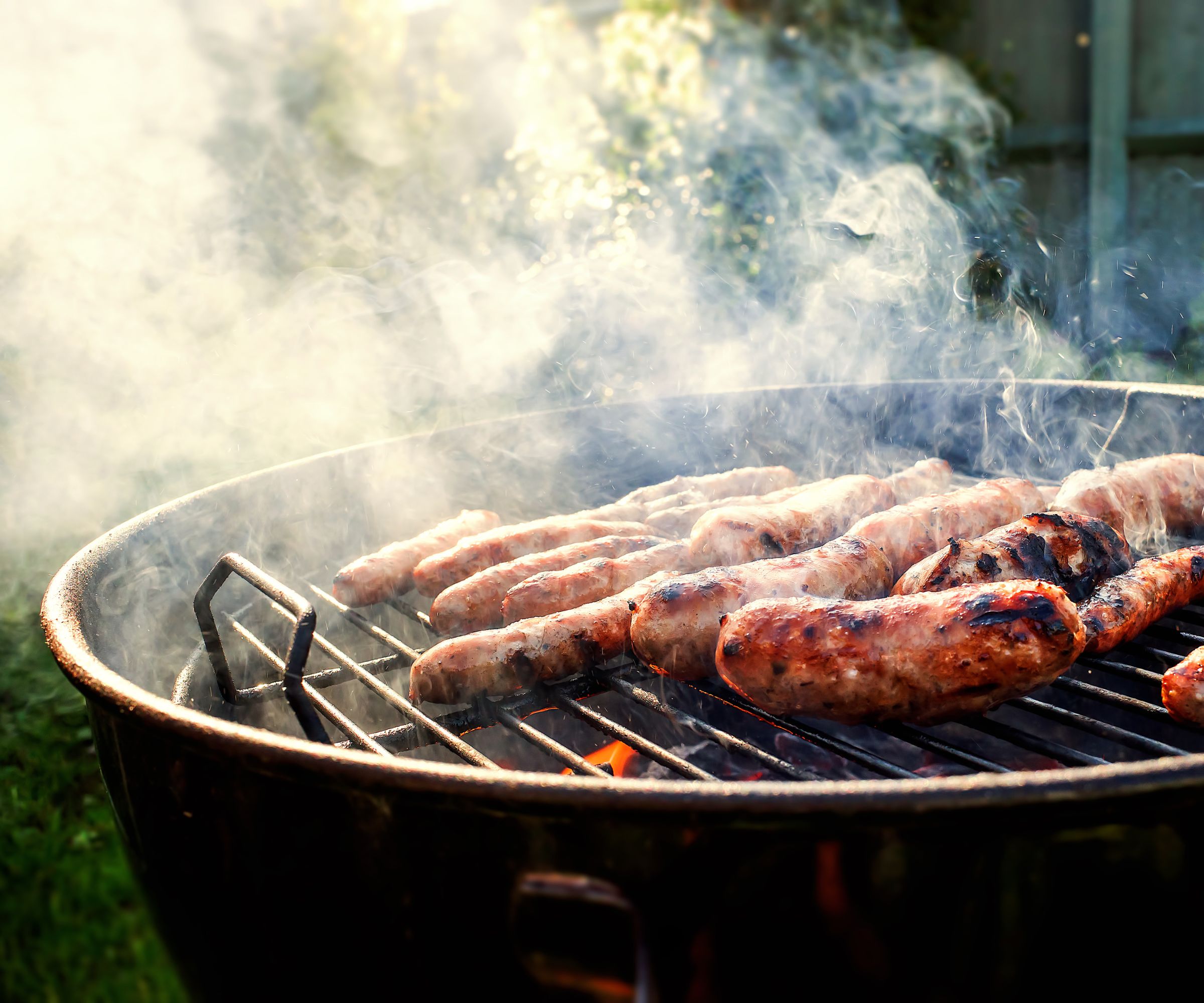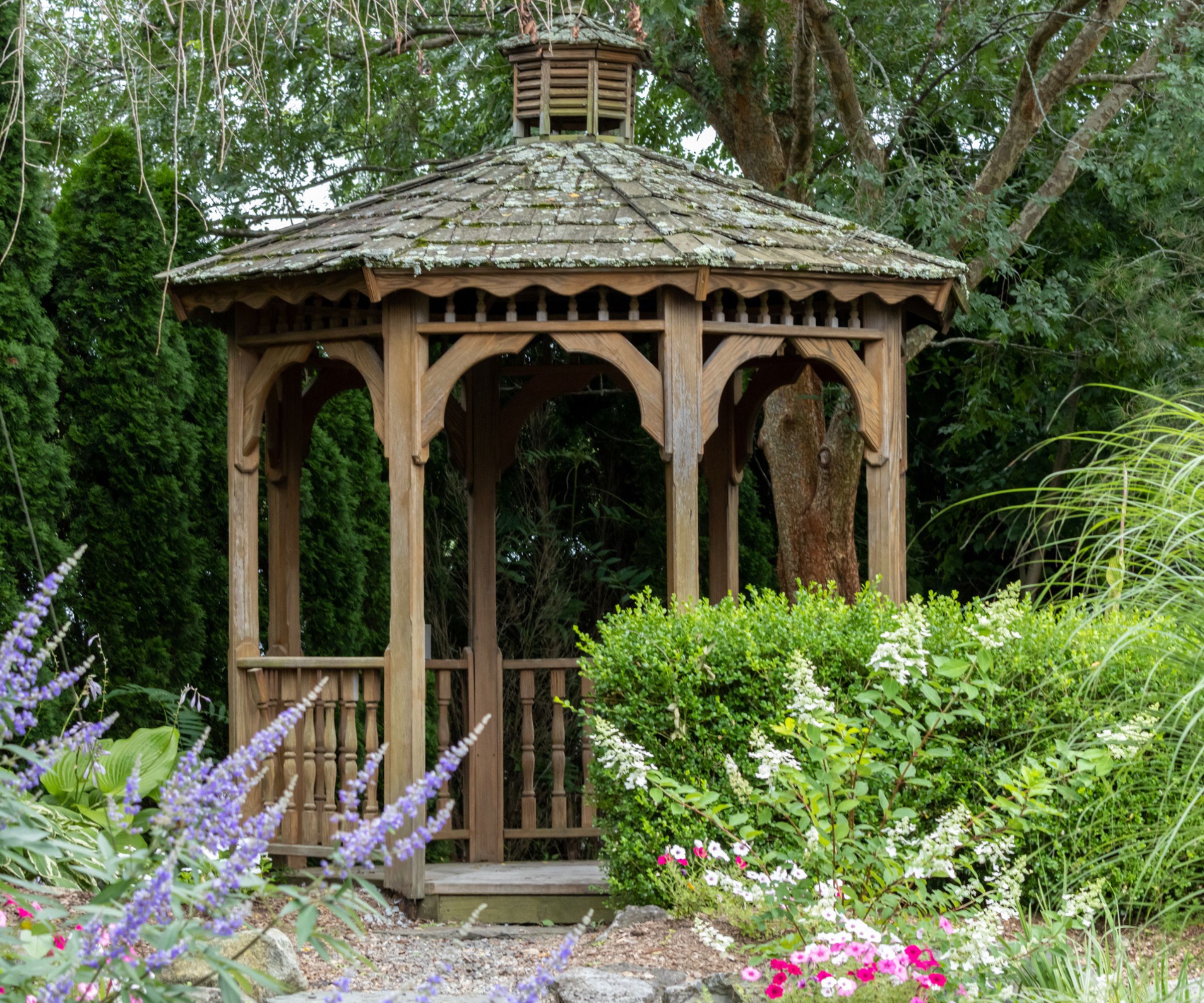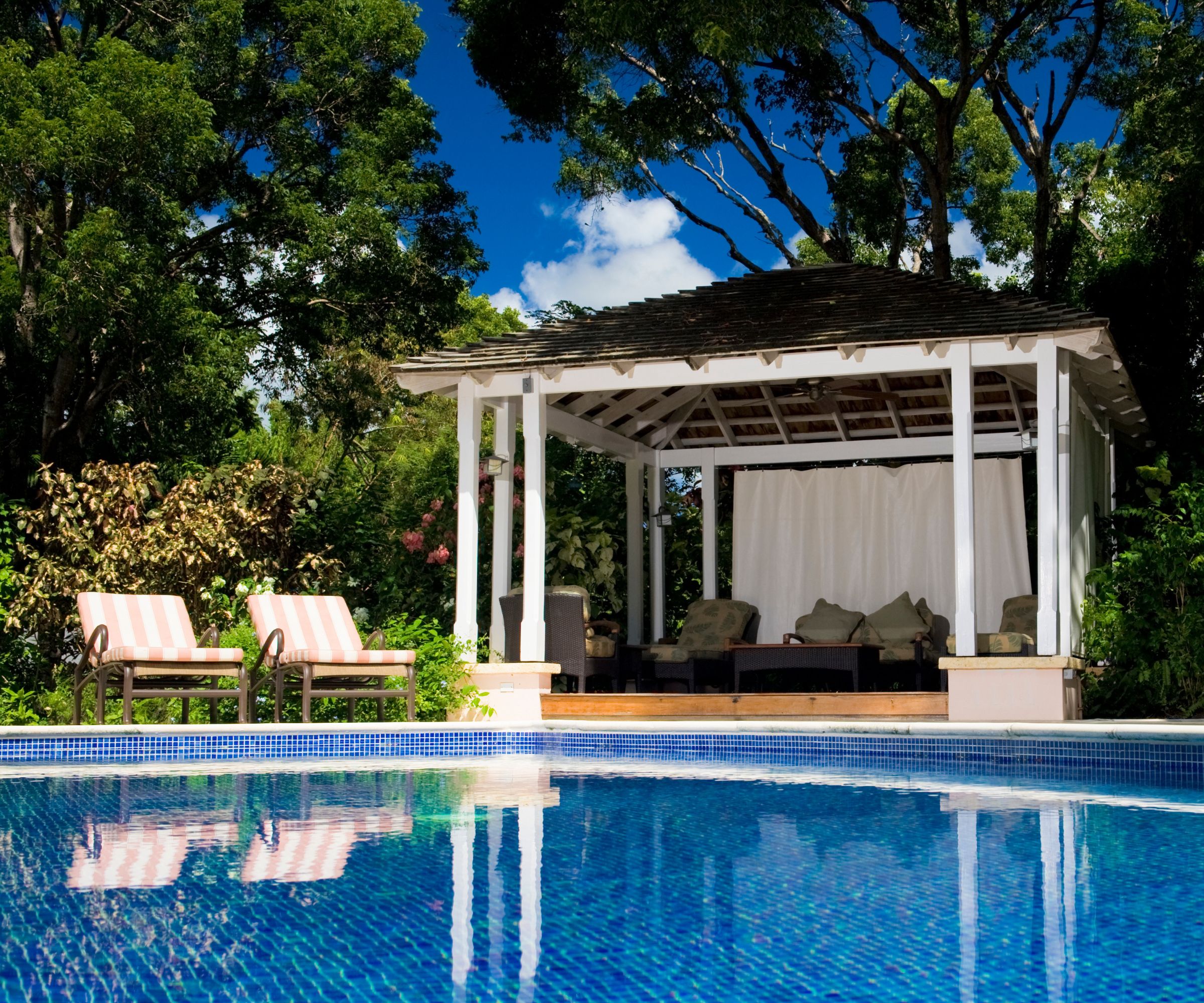
Grilling and gazebos might feel to many like a match made in heaven. A gazebo seems like a great option for grilling under, keeping you covered in case there's a sudden rainstorm, and offering handy shelves for ingredients and drinks.
I've tested plenty of the best grills, so I understand the potential dangers of grilling first-hand. While many retailers sell so-called 'grill gazebos' - you can find them at Bed Bath & Beyond, Amazon, and Walmart - and many reviewers love them, they could pose a safety risk if not used responsibly.
I spoke to a garden expert for a structural perspective on the dangers of grilling under a gazebo to find out more.
1. Open flames

While lots of people use grill gazebos without incident, it's an inherently unsafe idea. While it's never completely safe, some types of grill are safer than others. For example, an electric griddle doesn't use an open flame, so it's safer than a grill.
Though they also use open flame, gas grills are slightly safer than charcoal grills or smokers, because you can easily control the height of the flame. However, all of these grills reach significant temperatures, and gas grills, charcoal grills, and smokers all use open flames, which pose a significant fire risk.
On top of that, you have to consider your ingredients. Garden structure expert Stacy Elmore says that 'It's important to know what you are grilling. As any grill master can attest, very fatty ground beef will cause flames to shoot up and potentially lick the posts of your gazebo.'
2. Ventilation

Every gazebo is open to the wind on the sides, so you'd be forgiven for thinking that they have good enough ventilation for grilling. Unfortunately, this is not always the case. Because gazebos have roofs, and smoke rises, you risk trapping smoke underneath the roof and inhaling it, which can cause a variety of health issues.
That effect is compounded if your gazebo has screens or curtains. Stacy Elmore told me that 'If your gazebo is enclosed by solid walls or even very thick screens, you could be under a big safety risk due to carbon monoxide. Make sure there is plenty of ventilation.'
If your gazebo backs onto a neighbor's wall or fence, the effect is even worse. Even if your gazebo has hanging ceiling fans, all you will do is circulate smoke around as you cook.
Seats: 4 Dimensions: 10ft x 10ft x 9.30ft Materials: iron, polyester
This gazebo is perfect for hotter climates. The usual heavy curtains are supplemented with light, airy netting that will keep you cool and protected from bug bites without closing off the entire gazebo.
Seats: 8 Dimensions: 14ft x 10ft x 9ft Materials: cedar, steel
This gazebo is a classic wooden design that will work for most gardens. However, the best feature is hidden at the back. This gazebo has a power outlet built-in, so you can run electric grills, speakers, TVs, and projectors in the great outdoors.
Seats: 6 Dimensions: 12ft x 12ft x 9ft Materials: cedar, pine
If you want a permanent structure, I like this octagonal design. Made by Amish craftsmen in the USA, this traditional gazebo is built to last. It's perfect for a quiet area at the bottom of the yard, away from the noise of the house and the street.
3. Flammable materials

This one is pretty straightforward. Most gazebos are made from wood. Wood is flammable, therefore it poses a very high fire risk. Stacy says 'If you have a gazebo made of wood or another flammable material, it is a bad idea to grill under it. You risk grilling not only your food but the grill master as well.'
This is also true of metal gazebos. Cheap metal gazebos are a great way of introducing some shelter to your backyard. However, they're usually made from aluminum, and if exposed to extreme heat, they can snap or buckle.
On top of that, these gazebos tend to have fabric canopies, and while they're often made of fire-retardant polyester, this will still melt if exposed to extreme heat, posing a burn risk. Stacy advises 'If you have a metal gazebo, ensure that the metal is thick enough for the excess heat from your grill. If the material is too thin, it will buckle, and "oil can" due to the changes in heat.' Oil canning is exactly as it sounds - a gazebo crumpling up like a can.
On top of the issues with materials, even the finish on your gazebo could be a fire risk. No wood stain or lacquer can make wood fire-retardant, and many finishes on metal gazebos are flammable.
4. HOA rules about grilling
Many homeowners associations have rules about grilling, and grilling unsafely could lead to a pretty big fine.
Stacy told me 'Some homeowners associations have rules against grilling under a gazebo. These almost always come down to what the gazebo is made of. Just as you wouldn't want to grill on a wooden balcony, you wouldn't want to grill under a wooden gazebo.'
Grilling FAQs
Can you grill on a wooden deck?
You can, but as with using a grill gazebo, there's a big fire risk, especially if you use a charcoal grill.
For more help with grilling safety and efficiency, take a look at our guide to when you should grill with the lid closed or how to make a grill nonstick.







